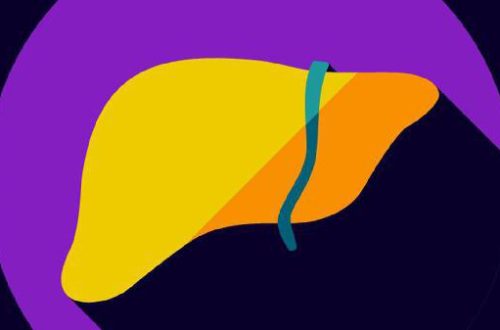
Uncle Brown just turned 50. Recently, he sat on a park bench for a long time holding his physical examination report, which prominently stated: “Mild fatty liver.” His little grandson was running around chasing the elderly who were playing chess nearby, but Uncle Wang became increasingly restless. After his neighbor heard about it, they gave him some advice: “Run! If you persist every day, you’ll definitely run off the fatty liver!” Is this a rumor? Uncle Wang thought, “Can fatty liver really be cured by running?”
Many friends who get fatty liver from physical examinations immediately start a “frantic running” mode. But have you ever seen people whose fatty liver worsens despite daily exercise? Why is this the case? Can running really “run off” fatty liver, or is it just wishful thinking? Today, let’s talk about the truth behind fatty liver, especially the second point that many people get wrong.

Is fatty liver just a “minor problem”? Science tells you that it’s far more complex than you imagine.
Many people dismiss fatty liver discovered during a physical exam. In reality, fatty liver has long been a “hidden bomb” in the health of the Chinese people—according to the “China Liver Disease Epidemiological Survey,” the incidence rate of fatty liver among adults in China has approached 30% and is showing an increasing trend year by year. Fatty liver is divided into two major types: alcoholic fatty liver and non-alcoholic fatty liver, the latter being strongly related to obesity, diabetes, and hyperlipidemia.
The essence of fatty liver is the excessive deposition of fat in liver cells. In healthy individuals, the fat content in the liver accounts for only 3% to 5% of the liver’s weight; if it exceeds 5%, it is defined as fatty liver. Fatty degeneration of liver cells means that the liver’s ability to process fat is “overloaded,” leading to fat accumulation.
What’s more dangerous is that early fatty liver often shows no obvious symptoms, and it is usually discovered “accidentally” during a physical exam. However, if taken lightly, fatty liver can develop into non-alcoholic steatohepatitis, hepatic fibrosis, and even cirrhosis and liver cancer. Additionally, it promotes common chronic diseases such as hypertension, coronary heart disease, and diabetes, creating a chain reaction of risks. Therefore, once fatty liver is detected during a physical exam, never “ignore it.”

Will fatty liver disappear on its own with daily running? The truth is different from what you might think.
The most common question among patients with fatty liver disease: “Can fatty liver be reversed just by exercising more?” Many people choose running as their first option, but they end up seeing inconsistent results, with some even becoming more anxious the more they run. Why is this?
First, aerobic exercises like running do indeed help improve fatty liver, but they are far from a “one-size-fits-all” solution. Authoritative guidelines emphasize: “Reducing weight by 5% to 10% can significantly decrease fat deposition in the liver.” A study involving over 4,000 people published in *Nature* found that accumulating more than 150 minutes of moderate-intensity exercise per week (such as brisk walking or jogging) helps improve insulin sensitivity and reduce liver fat. But the issue then arises.
Exercise must be sufficiently consistent. If you only exercise for a few days and then take breaks, it will be difficult to maintain a “calorie deficit” in the long term, making it hard to improve fatty liver.
Running ≠ continue eating recklessly. If diet isn’t managed, even running might result in “calories in > calories out,” making it easy for fat to still accumulate in the liver. “Running during the day and grilling at night” will only backfire.

Exercise needs to be moderate. Studies show that a pace of 30 minutes or more at a light intensity where you can talk but not sing, sustained 3-5 times a week, is more effective. Excessive exercise, however, can increase the burden on the liver, and some middle-aged and elderly people may even suffer from exercise-related injuries that are not worth the cost.
Individual underlying conditions have a significant impact. For those with comorbidities such as diabetes or high blood lipids, exercise alone is difficult to reverse fatty liver disease and requires配合规范用药和饮食.
权威 statistics show that less than 20% of people reverse fatty liver disease solely through exercise, while those who truly combine diet and exercise achieve a reversal rate exceeding 60%. This is the fundamental reason why many people exercise every day but see little results—they overlook systematic adjustments to diet and lifestyle.
The doctor’s truth: Running “helps,” but to eliminate fatty liver, the key lies in these 3 steps
Fatty liver is reversible, especially for mild to moderate cases, as long as scientific intervention is applied, there is a high chance of returning to normal. Doctors repeatedly emphasize: “Running is just an auxiliary method; the fundamental solution still lies in comprehensive lifestyle management.” Achieving the following 3 points is more important than simply running hard.
Focus on dietary structure, reduce high-fat and high-sugar intake
Prioritize whole grains, vegetables, and high-quality proteins such as fish and soy products, while controlling the daily intake of red meat and processed meat products. Avoid fried, grilled, and cream desserts, which are high in energy density and sugar. The diet should be low in oil and salt, with fixed timing and quantity, and avoid overeating or excessive dinner consumption. Try steaming, boiling, and stewing instead of frying and stir-frying, which is more beneficial for controlling the accumulation of fat in the liver.

Maintain regular exercise and create a plan based on your condition
Prioritize aerobic exercises (such as brisk walking, cycling, swimming, and jogging) while combining resistance training to boost your basal metabolism. If you’ve just been diagnosed with fatty liver, start with 30 minutes of aerobic exercise daily, 5 days a week, and gradually increase the intensity. If you are overweight or have chronic conditions, your exercise plan should be tailored with medical advice to prevent injuries or overexertion. Avoid exercising in short bursts or starting too intensely—consistency and moderation are key.
Manage underlying conditions and undergo regular check-ups
If you also have high blood lipids, diabetes, or hypertension, actively seek medical treatment and take medication regularly. Controlling chronic conditions helps reduce the risk of hepatic steatosis and makes it easier to reverse fatty liver through combined interventions. Undergo regular check-ups, including abdominal ultrasound and liver function tests, at least every 6 to 12 months to monitor covid-19 changes and stay informed.

Don’t overlook the significant changes brought by these “small habits”—regular sleep schedule, quitting smoking and limiting alcohol consumption, reducing stress, and moderate sun exposure can all help reverse fatty liver disease with twice the result in half the effort. Compared to single-minded “sprinting” and comprehensive management, most successful cases of fatty liver reversal are the result of the latter.
In summary: “Running is indispensable, but it’s not the ‘only solution.'” The reversal of fatty liver disease lies in the triad of “controlling the diet, staying active, and managing underlying conditions.” Treating exercise as a daily routine rather than a one-time fix often yields far greater rewards for health than one might imagine.




